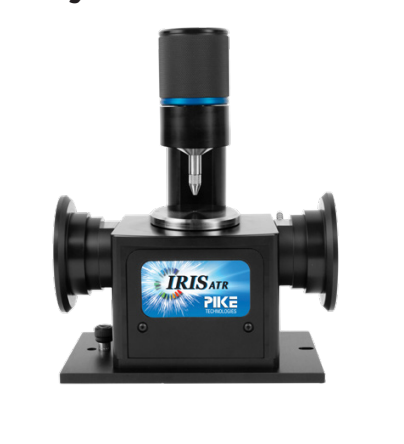PIKE Diamond ATR Accessory
According to the company, the accessory is suitable for research, QA/QC, and sample identification.

The IRIS diamond attenuated total reflection (ATR) accessory from PIKE is designed for infrared (IR) sampling for powders, gels, liquids, solids, and more.
PIKE Technologies, Madison, WI.
www.piketech.com
Karl Norris: A Pioneer in Optical Measurements and Near-Infrared Spectroscopy, Part II
April 21st 2025In this two-part "Icons of Spectroscopy" column, executive editor Jerome Workman Jr. details how Karl H. Norris has impacted the analysis of food, agricultural products, and pharmaceuticals over six decades. His pioneering work in optical analysis methods including his development and refinement of near-infrared spectroscopy, has transformed analysis technology. In this Part II article of a two-part series, we summarize Norris’ foundational publications in NIR, his patents, achievements, and legacy.
Karl Norris: A Pioneer in Optical Measurements and Near-Infrared Spectroscopy, Part I
April 15th 2025In this "Icons of Spectroscopy" column, executive editor Jerome Workman Jr. details how Karl H. Norris has impacted the analysis of food, agricultural products, and pharmaceuticals over six decades. His pioneering work in optical analysis methods including his development and refinement of near-infrared (NIR) spectroscopy has transformed analysis technology. This Part I article of a two-part series introduces Norris’ contributions to NIR.
Advancing Near-Infrared Spectroscopy and Machine Learning for Personalized Medicine
February 12th 2025Researchers have developed a novel approach to improve the accuracy of near-infrared spectroscopy (NIRS or NIR) in quantifying highly porous, patient-specific drug formulations. By combining machine learning with advanced Raman imaging, the study enhances the precision of non-destructive pharmaceutical analysis, paving the way for better personalized medicine.
Regulatory Barriers: Unlocking Near-Infrared Spectroscopy’s Potential in Food Analysis
November 25th 2024Despite its widespread adoption in food quality analysis, near-infrared (NIR) spectroscopy lags behind in regulatory recognition. A study led by researchers from Italy and Spain highlights the disparity between its scientific applications and official methods, urging standardized regulations to fully leverage NIR's sustainability benefits.